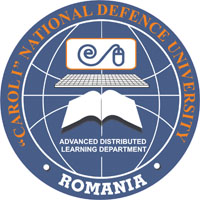WOVEN FABRICS DEFECTS - APPROACH BY MEANS OF ACCESSIBLE OPEN SOURCE, USED AS E-LEARNING TOOL FOR STUDENTS
WOVEN FABRICS DEFECTS - APPROACH BY MEANS OF ACCESSIBLE OPEN SOURCE, USED AS E-LEARNING TOOL FOR STUDENTS
Author(s): Rodica HARPASubject(s): Education
Published by: Carol I National Defence University Publishing House
Keywords: woven fabrics; fabric defects; e-learning tool; Cotton Incorporated's website; Quality Assurance; end use
Summary/Abstract: This paper deals with Cotton Incorporated's website that, among other facilities for the global textile community, includes the Technical Assistance & Training part. This consists of Textile Encyclopedia, Cotton Fiber Technical Guide, Engineered Knitting Program, Technical Bulletins, and Standard Fabric Defect Glossary. The chapter entitled Standard Fabric Defect Glossary addresses a complex and instructive approach of woven fabrics defects topic and can be accessed by students as elearning tool. In both, course and laboratory activities for Quality Assurance in Weaving Mill, from the curriculum delivered at the Faculty of Textile, Leather and Industrial Management from Iaşi, for Bachelor students (4th year of tudy), woven fabrics defects topic is approached from several points of view. Concretely, fabric defects are identified first as a defining element in terms of fabric compliance with customer requirements for a particular end use. Fabric defects are presented also as a woven defining quality parameter depends on how are made a part of the supply chain (from spinning to weaving). In terms of sources, that can cause defects in fabric, students learn about SR ISO 8498:1996, which is the Romanian referential for classification and description of woven’ defects, in general, without regard to the particular technology of weaving and finishing. After that, they are trying to make connections with particular weaving technology and finishing. Finally, for teaching in our laboratory, students have available database with fabric defects, generated through a national project and then continuously upgraded. In addition, students access online the Cotton Incorporated's website and use Standard Fabric Defect Glossary as a valuable interactive e-learning tool.
Journal: Conference proceedings of »eLearning and Software for Education« (eLSE)
- Issue Year: 11/2015
- Issue No: 03
- Page Range: 574-581
- Page Count: 8

